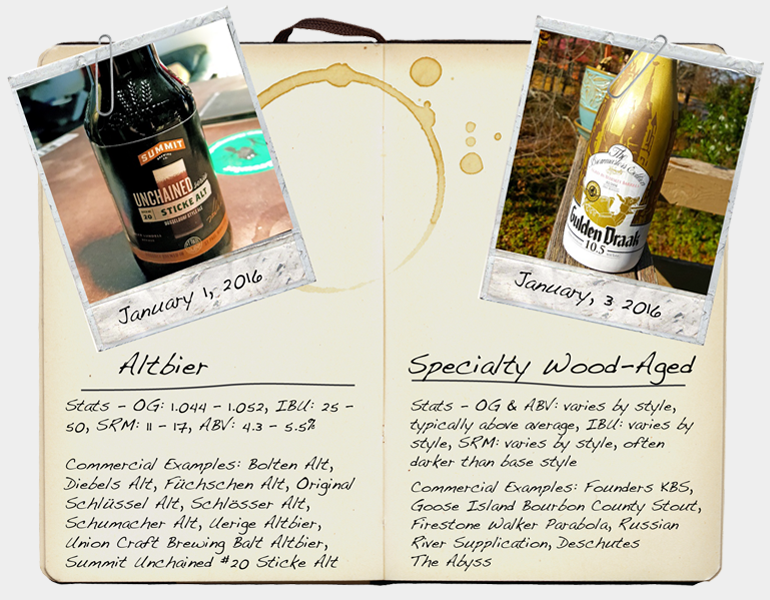Start 14-Day Trial Subscription
*No credit card required

Altbier and Specialty Wood Aged Beer
Specialty Wood-Aged Beer
No style gets craft beer connoisseurs in a frenzied tizzy more than a Specialty Wood-Aged Beer. Specifically, Barrel-aged Imperial Stouts are among the most sought after beers currently available on the market. People brave the elements and wait in line for hours for 3 Floyd’s Dark Lord, Goose Island’s Bourbon County line, Westbrook’s Mexican Cake and various other lesser-known barrel-aged beauties.
Despite the popularity of barrel-aged imperial stouts, their style is still based upon what barrel they are aged in, be they Whiskey, Bourbon, Scotch, Rum or Tequila, and Specialty Wood-aged Beers have specific characteristics that set them apart from other beers that have spent time in wood.

Many craft brewers use wood chips, spirals or staves in order to impart a beer with barrel flavors, though these beers are not technically "specialty," but rather just "wood-aged beers." Even AB InBev got in on the action with last year's release of Oculto – a “premium” lager brewed with tequila barrel staves.
Preserving beers in wood is a practice that has existed since the birth of beer, and some styles (such as Flanders Red or Lambic) require keeping beers in barrels to create and cultivate cultures that aid in the continued fermentation of those beers. However, specialty wood-aged beers are aged in barrels solely to impart the flavors of whatever libation rested in the barrel before its use as a beer container. Many barrels’ interiors are charred or toasted in advance to provide even more flavor to the beer housed inside.
Specialty Wood-Aged Beer is a bit of a catch-all phrase too. While one might immediately think of uber-popular (and extremely revered) barrel-aged stouts that craft beer fanatics may camp out several days in advance to obtain, any beer that has spent time in a barrel that was previously used for another alcohol qualifies as a specialty wood-aged beer.
Green Flash Brewing’s Cellar 3 series is an exemplar of the style. While the series contains the standard bourbon barrel-aged Imperial Stout (Silva Stout), it also explores fascinating additions such as Oculus Sauvage, a Mixed-Style Beer (Belgian Tripel and Double IPA) that was aged in red wine barrels and finished with Brettanomyces, or Natura Morta Plum, a Saison brewed with plums and also aged in red wine barrels.
Aging beers in once-used barrels can completely transform a beer’s flavor, color, aroma and (unexpectedly) alcohol content. Of course, the changes are dependent on what barrel is employed, but some common flavors and aromas found in specialty wood-aged beers include: vanilla, wood, butterscotch, toasted bread, coffee, cocoa and caramel.
While these flavors and aromas should be noticeable, they should never overpower, but rather nestle themselves side-by-side with the base beer style’s characteristics – leading to a delightfully robust and complex, yet balanced, finish.
The beers should contain a slightly more warming alcohol element, though they should never be too “hot,” and are often darker than the base beer due to the beer leeching some of the original liquid leftover in the barrel.
STATS
OG: varies by style, typically above average
IBU: varies by style
SRM: varies by style, often darker than base style
ABV: varies by style, typically above average
Commercial Examples: Founders KBS, Goose Island Bourbon County Stout, Green Flash Oculus Sauvage, Firestone Walker Parabola, Toppling Goliath Kentucky Brunch Brand Stout, Perennial Barrel-Aged Abraxas, Russian River Supplication, Deschutes The Abyss
(Top body photo courtesy of Union Craft Brewing, bottom body photo courtesy of Green Flash Brewing Co.)



